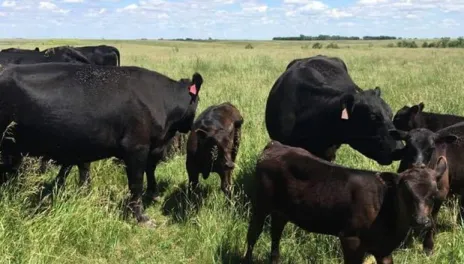Determining and maintaining pasture readiness for livestock turnout
With snowfall at the Carrington Research Extension Center sitting at well over 85 inches for the season, and 20-some inches still lingering in the farmyard, thoughts of livestock turnout to grass seem like a myth. But sooner or later Mother Nature will give us warmer days and the greenness of new grass tillers will begin to show. There are many important decisions ranchers must make for the upcoming grazing season.
One very important decision is selecting a date to start grazing pastures. Graze too early and you may hurt your yield, or wait too long and you may have losses due to trampling and reduced palatability.
During initial spring growth, most grasses have three or fewer leaf blades in a vegetative growth stage. During this vegetative stage, grasses increase leaf length and the number of leaves as a function of the accumulated growing degree days. As the daily high and low temperatures increase, so will leaf area and production. With increased surface area, the grass increases photosynthesis. Grazing should not occur until grasses reach the 3.5 leaf stage.
Once grasses reach the 3.5 leaf stage, there is a rapid elongation of the stem. At this point, most grasses will have enough photosynthetic capabilities to sustain grazing. During the elongation stage, grasses will continue growing up to a total of five leaves. Most cool-season grass species will produce a maximum of six leaves before they begin to produce a head. Once inflorescence, or flowering, has started, the quality of the forages begins to decline as the cellulose and protein becomes encapsulated by lignin.
For more information on plant development and growing degree days, read more in NDSU Extension publication R1061 Determining Grazing Readiness for Native and Tame Pastures.
When pastures are ready for grazing, ranchers should also set their stocking rate. Determining an appropriate stocking rate is the most important decision that ranchers must make regarding grazing, as it affects livestock productivity and rangeland health (Bailey, 2016; Briske et al., 2008; Holechek et al. 1999; Holechek and Galt, 2000). Heavier stocking rates can result in rangeland degradation, if not properly managed, while light stocking levels had no adverse effects on range condition (Willms et al., 1985). Higher stocking densities can limit diet selectivity and increase energy expenditures associated with increased daily grazing time and distances traveled.
As livestock graze across the landscapes, producers may notice uneven utilization of pastures. Livestock prefer to graze sites of higher palatability, often are close to water, which can therefore degrade riparian areas. Grazing distribution is affected by abiotic and biotic factors, such as slope, topography, and forage quality and quantity (Bailey et al. 1996). Strategic supplementation of nutrients, salt, and minerals can be used to entice animals to areas of low utilization.
Lastly, rotating the season of use can rest pastures during key times of the year. Pastures grazed during late fall can be rested in spring to improve plant vigor. Resting pastures with riparian areas can increase plant and root development, which, in turn, can protect streambanks.
The art and science of pasture management is critical for optimal livestock production and rangeland health.
Colin Tobin, Ph. D.
Colin.Tobin@ndsu.edu
Animal Scientist
